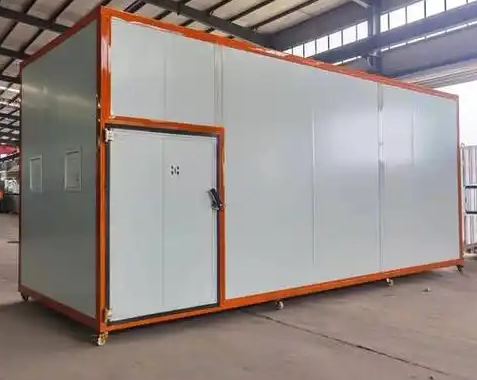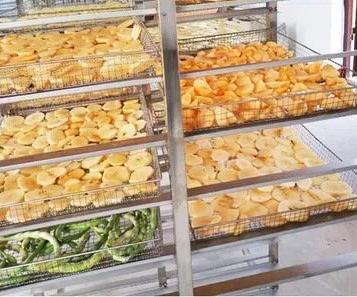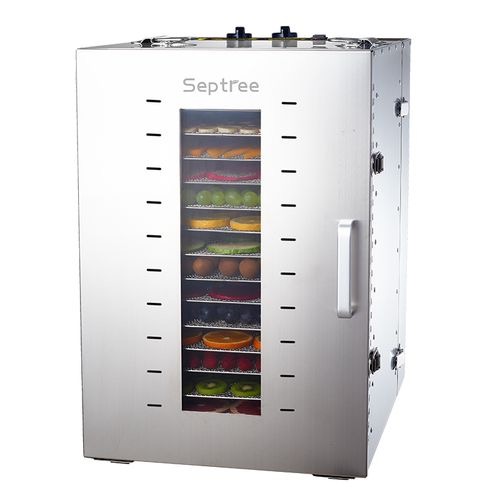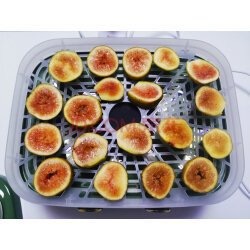
Content Menu
● Understanding Heat Pump Technology
● How Heat Pump Dryers Work
● Key Features That Enhance Energy Efficiency
>> 1. High Energy Efficiency Ratings
>> 2. Gentle Drying Process
>> 3. Moisture Control Systems
>> 4. Ventless Design for Flexible Installation
>> 5. Smart Technology Integration
>> 6. Multiple Drying Programs for Different Food Types
>> 7. Energy Recovery Systems
● Advantages Over Traditional Dryers
● Conclusion
● Related Questions
>> 1. What types of foods can be dried using a heat pump dryer?
>> 2. How does a heat pump dryer compare to traditional dehydrators?
>> 3. What maintenance is required for a heat pump dryer?
>> 4. Can I use a heat pump dryer for bulk food drying?
>> 5. Are there any specific certifications I should look for when purchasing a heat pump dryer?
In the world of food processing and preservation, the efficiency of drying methods plays a crucial role. As a leading manufacturer of food drying machines in China, we specialize in providing OEM services to international food dryer brands, wholesalers, and producers. One of the most innovative technologies in this field is the heat pump dryer, which offers significant advantages in energy efficiency. This article will explore the features that make heat pump dryers exceptional for food drying applications, their operational benefits, and how they contribute to sustainable practices in the food industry.

Understanding Heat Pump Technology
Heat pump technology is a revolutionary approach to drying that differs significantly from traditional drying methods. Instead of using direct heat sources like gas or electric coils, heat pump dryers utilize a closed-loop system that recycles air, making them highly energy-efficient.
How Heat Pump Dryers Work
The operation of a heat pump dryer can be summarized in several key steps:
- Air Intake: The dryer draws ambient air from the environment.
- Heating Process: This air is passed over a heat exchanger where it is heated using a refrigerant. The refrigerant absorbs heat from the air and circulates it back into the drying chamber.
- Moisture Absorption: The warm air is circulated through the chamber containing food products, where it absorbs moisture.
- Condensation: After absorbing moisture, the air passes through another heat exchanger where it cools down, causing the moisture to condense into water. This water is collected in a tank or drained away.
- Recycling Warm Air: The now-dry air is reheated and sent back into the chamber, continuing the cycle until the food products are adequately dried.
This process allows heat pump dryers to operate with remarkable energy efficiency, consuming significantly less energy than traditional drying methods.
Key Features That Enhance Energy Efficiency
1. High Energy Efficiency Ratings
Heat pump dryers are designed to meet stringent energy efficiency standards. Many models come with certifications such as Energy Star, indicating they consume less energy compared to conventional dryers. This not only helps businesses save on operational costs but also reduces their environmental impact.
2. Gentle Drying Process
One of the standout features of heat pump dryers is their ability to dry food products at lower temperatures. Traditional drying methods often use high temperatures that can damage delicate items or lead to nutrient loss. Heat pump dryers typically operate at lower temperatures, preserving the quality and nutritional value of the food being dried.
3. Moisture Control Systems
Advanced moisture control systems are integral to heat pump dryers. These systems monitor humidity levels within the drying chamber and adjust airflow and temperature accordingly. By optimizing these parameters, heat pump dryers ensure that food products are dried efficiently without over-drying or under-drying.
4. Ventless Design for Flexible Installation
Heat pump dryers feature a ventless design that allows for flexible installation options. Unlike traditional dryers that require external venting systems, heat pump models can be installed anywhere there is electricity and drainage access. This flexibility makes them ideal for various food processing environments.
5. Smart Technology Integration
Many modern heat pump dryers incorporate smart technology features that allow users to monitor and control their machines remotely via smartphone applications. This capability enhances convenience and enables operators to optimize energy usage by scheduling drying cycles during off-peak electricity hours.

6. Multiple Drying Programs for Different Food Types
Heat pump dryers often include various drying programs tailored for different types of food products. Whether it's fruits, vegetables, herbs, or meats, these specialized programs ensure optimal drying conditions while maximizing energy efficiency.
7. Energy Recovery Systems
Some advanced models feature energy recovery systems that capture excess heat generated during the drying process and redirect it back into the system. This innovative feature further reduces energy consumption and enhances overall efficiency.
Advantages Over Traditional Dryers
The advantages of heat pump dryers extend beyond just energy savings:
- Cost Savings: Although they may have a higher initial cost compared to conventional dryers, the long-term savings on utility bills can offset this initial investment significantly.
- Quality Preservation: By operating at lower temperatures and utilizing gentle drying methods, heat pump dryers help preserve the flavor, color, and nutritional content of food products better than traditional methods.
- Environmental Impact: By reducing energy consumption and minimizing waste, heat pump dryers contribute to lower greenhouse gas emissions, making them a more sustainable option for eco-conscious businesses in the food industry.
- Reduced Noise Levels: Heat pump technology operates more quietly than traditional drying methods, making them suitable for use in noise-sensitive environments such as restaurants or small-scale production facilities.
Conclusion
In conclusion, heat pump dryers represent a significant advancement in food drying technology, combining exceptional energy efficiency with effective drying capabilities. Their innovative design not only reduces energy consumption but also promotes sustainable practices by minimizing environmental impact while preserving product quality. As more businesses recognize these benefits, heat pump dryers are likely to become essential tools in modern food processing operations seeking both efficiency and sustainability.

Related Questions
1. What types of foods can be dried using a heat pump dryer?
Heat pump dryers can effectively dry a wide variety of foods including fruits (like apples and bananas), vegetables (such as carrots and peppers), herbs (like basil and thyme), and even meats (like jerky).
2. How does a heat pump dryer compare to traditional dehydrators?
Heat pump dryers generally offer better energy efficiency than traditional dehydrators due to their ability to recycle air and operate at lower temperatures while still effectively removing moisture from food products.
3. What maintenance is required for a heat pump dryer?
Regular maintenance includes cleaning filters after each use, checking for blockages in air ducts or condensate drains, and ensuring that all components are functioning properly to maintain optimal performance.
4. Can I use a heat pump dryer for bulk food drying?
Yes, many industrial-grade heat pump dryers are designed for bulk processing and can accommodate large quantities of food products simultaneously while maintaining consistent drying conditions.
5. Are there any specific certifications I should look for when purchasing a heat pump dryer?
When purchasing a heat pump dryer for food applications, look for certifications such as Energy Star for energy efficiency as well as any relevant food safety certifications that ensure compliance with industry standards.












